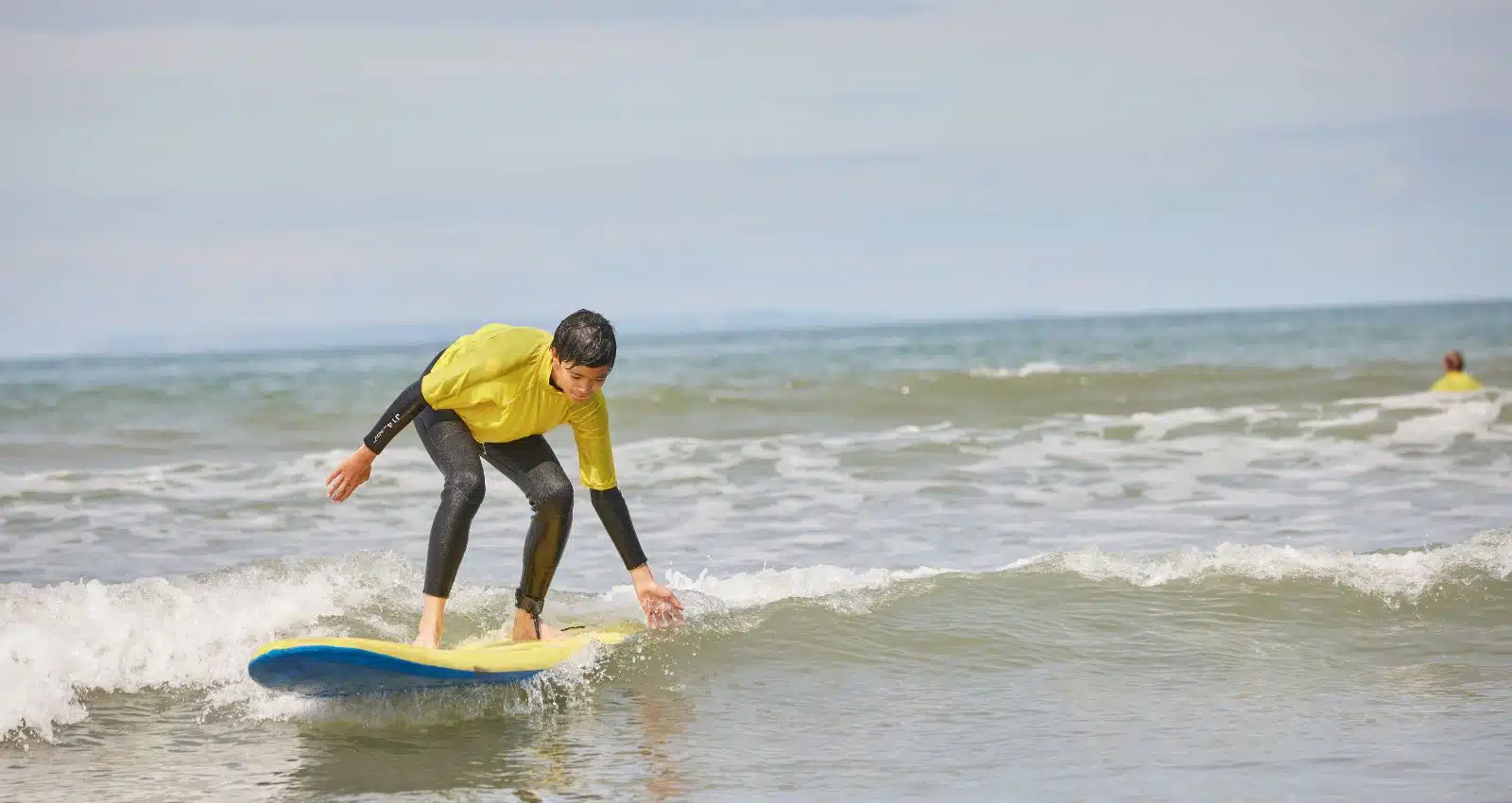Educational water activities for kids bring many benefits. Aside from being so much fun splashing around and playing games, watersports activities can actually help your child develop in lots of different ways. So let’s dive in!
The interpersonal benefits of water play
Whether your kids love watersports activities or are still trying to become more comfortable with swimming, they’re great for confident swimmers and non-confident swimmers!
Builds confidence in water
Educational water activities for kids are a brilliant way to build confidence in the water. Playing games in the water and taking part in challenges can help them to take their mind off their worries and fears, and just focus on having a great time!
If your kids already love the water, then it just helps their self-esteem grow even more!
Develops social skills
Watersports activities often involve some kind of teamwork, which is perfect for developing kids’ social skills. Communication is something that is important throughout life, and especially in early childhood when learning at school and making new friends. Learning how to communicate effectively to succeed in group challenges can positively contribute to the growth and development of children.
Explore the outdoors
Watersports activities allow children to experience the outdoors in ways they might never have done before, especially if they’re new to watersports. We’re all used to swimming at our local swimming pool, but swimming and watersports in a natural environment are beautifully different. New experiences are fantastic for broadening perspectives!
Improves physical health
Any kind of water activity involves physical exercise, and that’s another reason why they’re so great. Something as simple as swimming can be fun for your kids and not feel like exercise — but it is! Well, watersports add even more thrills to water activities, with surfing, sailing, canoeing and more.
The educational benefits of water play
There are endless educational benefits of water play that support children’s development. Let’s have a look at a few of the best!
Boosts problem-solving skills
Engaging in water activities and water play sparks a mini-adventure for kids! Whether they’re navigating their way through an aqua park or creating little waterfalls in water areas at school, these problem-solving scenarios boost their critical thinking and creativity as they try and overcome the task at hand.
Enhance swimming ability
Educational water activities for kids are super-fun; but they’re also more than that! While your kids are making the most of their water activities, they’re naturally enhancing their swimming skills with water safety, learning how to stay afloat and developing swimming styles. It’s a fantastic blend of aquatic fun and skill development!
Increases focus and concentration
With all the exciting educational water activities for kids, they’ll be captivated by as they take on a range of challenges in the water, helping increase their focus and concentration as they’re determined to succeed!
Educational water activities for kids at PGL
It’s not often that all children get involved with watersports. There are usually external factors that mean it’s just not possible to do at home, such as not living near any large lakes or watersport facilities. That’s why watersports camps like Surfing or Aqua Explorer at PGL are so great! It’s an opportunity for kids to try sports and activities that they’ve never done before, all with the supervision and support of our expert instructors.
On a watersports camp with PGL, your kids aged 11-16 stay at one of our incredible centres where they’ll take part in 50% classic PGL multi-activities and 50% watersports! Our camps include Surfing and Aqua explorer.
Book your child’s watersports adventure today!
We hope that we helped you to understand the benefits of water play! If you like the sound of our educational water activities for kids then why not check out our watersports camps for 11-16 year-olds. We also have a range of other adventure-filled camps over the school holidays, including multi-activity holidays, theme park camps and more. Our camps have been running for over 66 years! So, we know a thing or two about adventure. You can also browse all of our children’s adventure holidays here.
We also have plenty of other camps running throughout the school holidays. So, get in touch with our friendly and experienced team today to see how we can help. It’s never too late to book!


